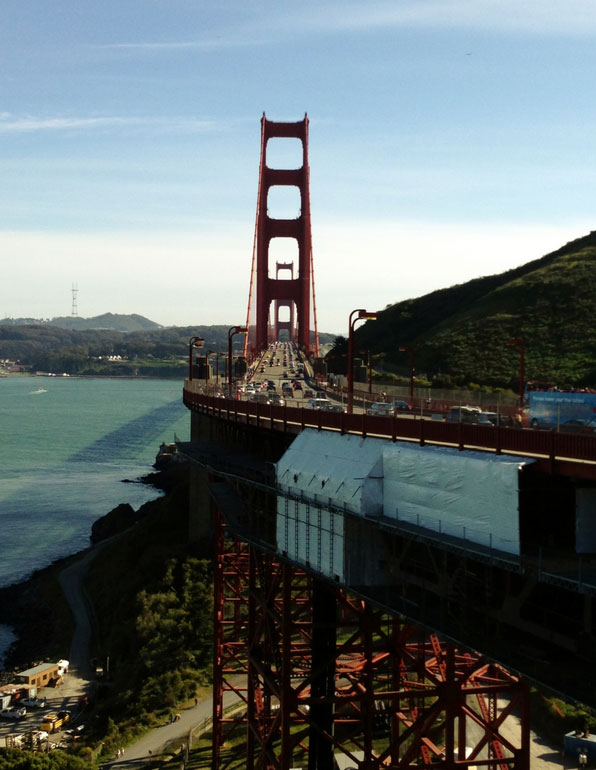6 Areas to Repair on Bridges
Nov 7th 2021

Roadways are the lifeblood of the economy for nearly every country. And, bridge maintenance is a critical factor in a well-running transportation system. If you find a bridge out of service, you’ll encounter unprecedented delays for commuters and fleets struggling to keep their tight schedules.
Roads in need of bridge repair cause hindrances that should be accounted for in modern-day engineering. To help you understand the nuances surrounding bridge repair, we’ve compiled a quick guide to formulate a bridge maintenance plan.
What is Bridge repair?
Fortunately, we can answer this question without the need for a bridge repair techniques PDF. When it comes down to the repair and repair of bridges, transportation departments should aim to restore them to full functionality. Bridges are regularly exposed to environmental and social factors that cause deterioration: traffic, heavier vehicles, pollution, and limited maintenance availability. Therefore, the need for bridge repair is ever-present.
As bridges continue to suffer the effects of excessive wear and tear, transportation departments should increasingly evaluate their safety. However, bridge upkeep requires engineering expertise. Various causes of bridge deterioration present unique problems, and different construction materials require specific types of bridge maintenance.
Concrete Bridges
Concrete bridges are common and are easily damaged during any construction or repair phase. However, with proper attention, you can avoid the need for total bridge repair. The most common causes of excessive concrete bridge deterioration include:
- An unmanaged variable load across the deck
- Asphaltic agglomerate on the deck
- Vibration
- Severe weather conditions
- Chlorides found in salts (used for de-icing or near marine areas)
- Expansion and contraction of cracks due to freezing cycles
Steel Bridges
While steel bridges can stay structurally sound for over 100 years, many need steel bridge repair after 50 years. These structures are affected by similar factors that plague concrete bridges, and they also need to contend with corrosion. Without adequate maintenance, corrosion results from humidity and affects joints, bearings, and seams.
Types of Bridge repair
Bridge repair will address cracking, spalls, and delamination while extending the lifespan of a bridge. However, the type of bridge, construction material, and the area in distress will dictate your approach to repair. Once you determine the necessary direction, you can begin bridge repair on the substructure, superstructure, or deck.
Joints
Expansion joints are usually the first item addressed to extend the life cycle. Without proper maintenance, a deteriorating joint hastens the need for bridge repair. A bad joint can cause spalling (fracturing of a surface or material) and damage the bridge substructure.
Steel repair
Steel bridge girders and beams will occasionally need heat straightening, welding, and resetting, as well as bearing replacements.
Substructure Replacement
Scour (the erosion of soil around a bridge’s foundation) can drastically reduce a bridge’s load-bearing capacity. As erosion exposes footing and pilings, they become exposed to environmental elements. Oftentimes, you’ll find corrosion below the splash zone.
For bridges constructed from timber, the substructure can be a victim to vermin, rot, and fungus.
Superstructure Replacement
In order to determine if the bridge has damage to its superstructure, you can perform a straightforward visual inspection. Girders, concrete laminate, prestressed concrete steel strands exhibit obvious signs of wear. If girder spacing poses a potential hazard, then a superstructure replacement may be the best course of action.
Widening and Strengthening
Sometimes, a deck is just beginning to show signs of spalling or delamination. If over 80% of the deck is still serviceable, you may only need to perform widening and strengthening. You can accomplish this by installing concrete jacking and steel plating. You could also use other materials, such as fiber-reinforced polymer (FRP) bonding, to complete a partial bridge repair.
Deck repair
You can mitigate damages to the surface of a bridge’s deck, but you can’t avoid them altogether. If you apply sealants and surface treatments, you can substantially extend the lifespan of a bridge. However, you should only undertake deck repair if the superstructure and substructure’s structural integrity is sound.
ASCE Grading Elements
The American Society of Civil Engineers (ASCE) grades a bridge’s durability using an eight-point criteria. This grade determines if the bridge’s service life is on track or if repair is necessary.
The ACSE Eight Criteria consists of:
#1 - Capacity
The bridge is graded on its ability to safely support a minimum capacity (and projected future demands) in its current state.
#2 - Condition
An engineer will examine a bridge’s structural components to determine its current and potential future condition.
#3 - Funding
The bridge is evaluated on its current funding status; this amount is then compared to the budget needed for proper maintenance.
#4 - Future Need
Engineers survey the bridge to determine budgeting needs for future improvements.
#5 - Operation and Maintenance
This element grades the owners’ capacity to provide continual bridge services. It also considers the bridge’s compliance with predefined regulations.
#6 - Public Safety
The bridge is ranked by the hazard it presents to public safety and the potential harm it would cause if it failed.
#7 - Resilience
The bridge is measured on its ability to withstand threats or incidents.
#8 - Innovation
Finally, the bridge is graded on the innovation that has been used to improve the structure.
Pro-Tect Plastics Bridge Containment Solutions
One of the best practices in bridge repair is shrink-wrapping the working area to keep the environment clear of particles and hazardous dust. It protects bystanders from dust and debris. It also protects your workers from the elements. By incorporating bridge shrinkwrap into the workflow, you can maintain schedules even in inclement weather. Contact Pro-Tect Plastics today to see how we can help can get your bridge shrink-wrapped. From heat wrap tape to a heat gun for shrink wrapping, we have everything you need to get your job done!

